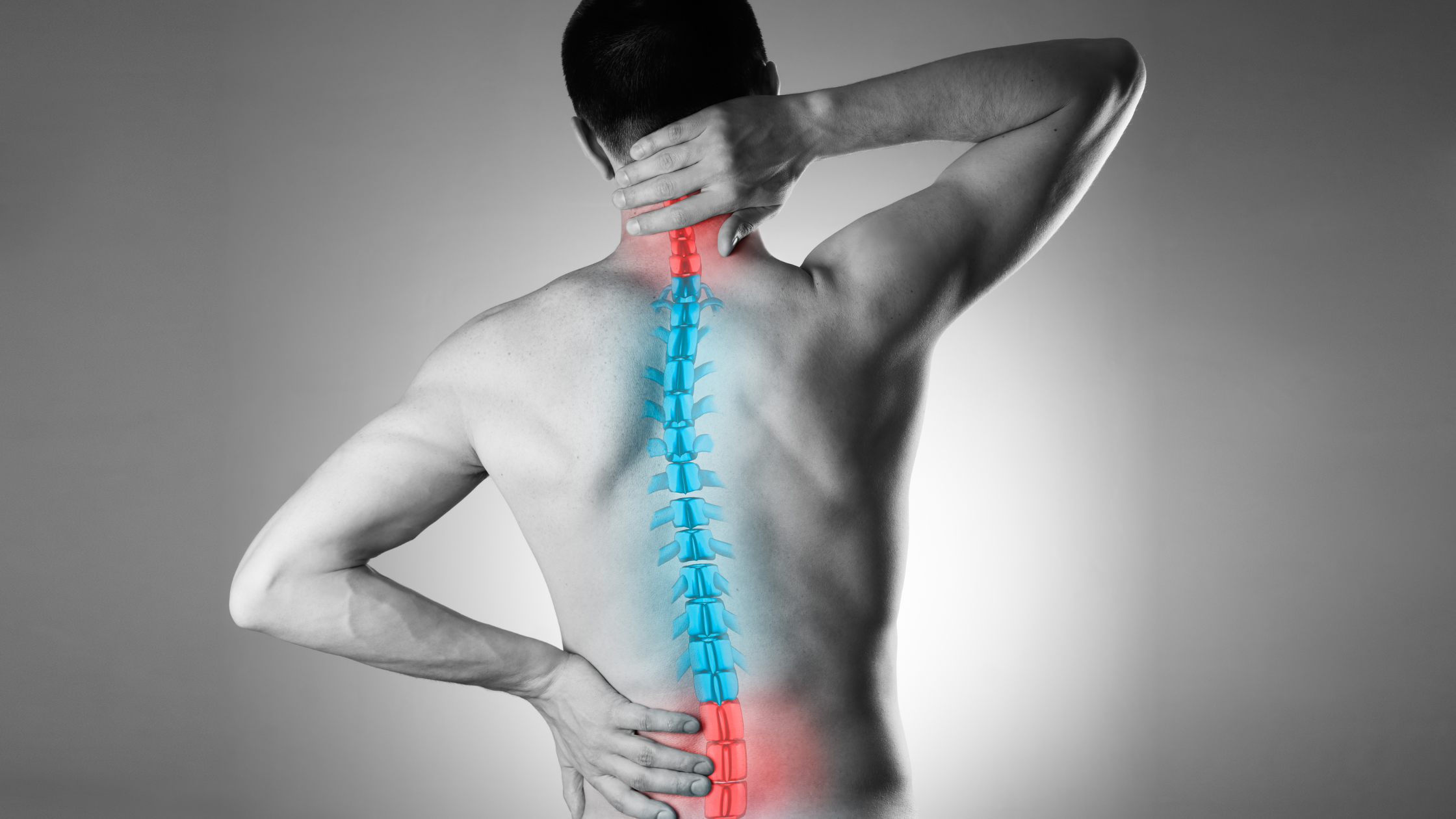Back and neck pain are prevalent issues affecting millions of individuals worldwide, impacting their daily lives and activities. These discomforts can arise from various sources, ranging from minor injuries to chronic conditions, making it essential to understand their root causes. By identifying these origins, individuals can manage their symptoms more effectively and seek appropriate treatment.
The prevalence of back and neck pain is a significant concern in healthcare, with numerous individuals seeking medical attention each year. This can lead to a decrease in productivity, increased healthcare costs, and diminished quality of life. Understanding the common causes of these pains can help in devising effective prevention and management strategies, thereby reducing the overall burden.
In addressing back and neck pain, it is crucial to consider both the physical and psychological factors that may contribute to discomfort. This comprehensive approach ensures a holistic understanding of the issue and facilitates the development of more effective interventions. By examining the anatomy, lifestyle factors, and contributing elements, we can gain a deeper insight into managing these common ailments.
Understanding the Anatomy of the Back and Neck
The back and neck are complex structures comprising bones, muscles, ligaments, and nerves, all working in unison to provide support and mobility. The spine, which runs through both regions, is divided into the cervical, thoracic, and lumbar sections, each playing a unique role in maintaining posture and enabling movement. Understanding this anatomy is crucial for identifying the sources of pain.
The cervical spine, located in the neck, consists of seven vertebrae that support the head and allow for its range of motion. Muscles and ligaments surrounding this area provide stability and flexibility, but they are also susceptible to strain and injury. This vulnerability can lead to conditions such as whiplash or cervical spondylosis, which are common causes of neck pain.
Similarly, the lumbar spine, found in the lower back, is designed to bear the weight of the upper body and facilitate various movements. This section of the spine is prone to issues such as herniated discs, which occur when the soft inner gel of a disc protrudes through its outer layer, causing pain and discomfort. Understanding the anatomy of these regions can aid in identifying the specific causes of pain and developing targeted treatment plans.
Common Causes of Back Pain
Back pain can arise from a variety of sources, with some of the most common being muscle or ligament strain, bulging or ruptured discs, and arthritis. Muscle strain often results from heavy lifting or awkward movements, leading to pain that can be either acute or chronic. This type of pain is frequently encountered by individuals who engage in activities that involve repetitive motions or poor ergonomics.
Bulging or ruptured discs are another prevalent cause of back pain. These conditions occur when the soft material inside the disc pushes out, irritating nearby nerves. This can result in sharp pain, numbness, or tingling sensations, often impacting an individual’s mobility and comfort. While not all disc issues cause pain, when they do, they can be debilitating.
Arthritis, particularly osteoarthritis, is a degenerative joint disease that can affect the spine, leading to stiffness and pain. Over time, this condition can result in the narrowing of the space around the spinal cord, a situation known as spinal stenosis. These structural changes within the spine can contribute significantly to back pain, especially in older adults.
Common Causes of Neck Pain
Neck pain, like back pain, can stem from various sources, including poor posture, injuries, and degenerative conditions. Poor posture, often associated with prolonged computer use or excessive device usage, places strain on the cervical spine, leading to discomfort and stiffness. This is commonly referred to as “tech neck” and is increasingly observed in the digital age.
Injuries, such as whiplash sustained during car accidents, can also be significant contributors to neck pain. Such injuries often involve the sudden jerking of the head, resulting in strains or sprains of the neck muscles and ligaments. The resulting pain can be acute and severe, requiring medical intervention to manage effectively.
Degenerative conditions, like cervical spondylosis, occur due to the wear and tear of the neck’s vertebrae and discs over time. This can lead to the development of bone spurs, disc herniation, or spinal stenosis, all of which may cause chronic neck pain. Understanding these common causes is essential for addressing neck pain and implementing appropriate treatments.
Lifestyle Factors Contributing to Pain
Several lifestyle factors can exacerbate back and neck pain, including sedentary behavior, poor diet, and inadequate exercise. A sedentary lifestyle, often characterized by prolonged sitting or lack of physical activity, can weaken muscles and lead to weight gain, both of which contribute to spinal discomfort.
A poor diet, lacking essential nutrients, can also impact spinal health. For example, insufficient calcium and vitamin D intake can weaken bones, making them more susceptible to fractures and pain. Additionally, a diet high in processed foods can contribute to inflammation, exacerbating pain symptoms.
Inadequate exercise or physical activity is a significant lifestyle factor contributing to back and neck pain. Regular exercise helps strengthen the muscles that support the spine, improve flexibility, and maintain a healthy weight. Without sufficient physical activity, individuals may experience increased stiffness, reduced mobility, and a higher risk of injury.
The Role of Posture in Back and Neck Pain
Posture plays a critical role in both back and neck pain, as incorrect posture can place undue stress on the spine and surrounding structures. Poor posture, such as slouching or hunching over a desk, can lead to muscle imbalances and strain, contributing to discomfort and pain over time.
Maintaining good posture involves aligning the body in a way that minimizes stress on the spine. This includes keeping the ears aligned with the shoulders and the shoulders aligned with the hips, whether sitting or standing. By practicing proper posture, individuals can reduce the risk of developing pain and improve their overall spinal health.
Incorporating ergonomic principles into daily activities can also support good posture and minimize pain. This may involve adjusting the height of a chair, using a standing desk, or investing in a supportive mattress. Small changes in daily routines can have a significant impact on reducing back and neck pain associated with poor posture.
How Stress and Mental Health Affect Pain Levels
Stress and mental health play a substantial role in the perception and intensity of pain, particularly in the back and neck regions. Chronic stress can lead to muscle tension, which in turn increases the likelihood of pain. Additionally, stress can amplify the body’s perception of pain, making it feel more intense and harder to manage.
Mental health conditions, such as anxiety and depression, can also influence pain levels. These conditions can alter pain perception and contribute to a heightened sense of discomfort. Individuals with mental health struggles may find it more challenging to cope with physical ailments, exacerbating their symptoms and creating a cycle of pain and distress.
Addressing stress and mental health is an essential component of managing back and neck pain. Techniques such as mindfulness, therapy, and stress-reduction exercises can help reduce stress levels and improve mental well-being. By managing these factors, individuals can alleviate pain symptoms and enhance their quality of life.
Prevention Strategies for Back and Neck Pain
Preventing back and neck pain involves adopting a comprehensive approach that includes lifestyle modifications, ergonomic adjustments, and regular exercise. Implementing these strategies can help reduce the risk of developing pain and improve overall spinal health.
- Lifestyle Modifications: Maintaining a healthy weight, staying active, and following a balanced diet are foundational elements of preventing back and neck pain. These changes can help reduce the strain on the spine and promote overall well-being.
- Ergonomic Adjustments: Making ergonomic adjustments to workspaces and daily activities can support proper posture and minimize strain on the spine. This includes using supportive chairs, positioning computer screens at eye level, and taking regular breaks to move and stretch.
- Regular Exercise: Engaging in regular physical activity can strengthen the muscles that support the spine, improve flexibility, and reduce the risk of injury. Activities such as yoga, swimming, and walking are excellent options for maintaining spinal health and preventing pain.
Conclusion and Key Takeaways
Back and neck pain are common issues that can significantly impact an individual’s quality of life. By understanding the common causes and contributing factors, individuals can take proactive steps to manage and prevent these discomforts. Addressing lifestyle factors, posture, stress, and mental health are crucial components of an effective pain management strategy.
Implementing prevention strategies, such as lifestyle modifications, ergonomic adjustments, and regular exercise, can help reduce the risk of developing back and neck pain. These measures, along with a comprehensive understanding of the anatomy and causes of pain, empower individuals to take control of their health and well-being.
For those experiencing persistent or severe pain, seeking professional medical advice is essential. Healthcare providers can offer tailored treatment plans and interventions to address specific pain causes and support recovery. By taking a proactive approach, individuals can effectively manage their pain and enhance their quality of life.
If you or someone you know is struggling with back or neck pain, now is the time to take action. Implement the prevention strategies outlined in this article and consult with a healthcare professional to develop a personalized treatment plan. Don’t let pain control your life—take control today for a healthier, more comfortable tomorrow







